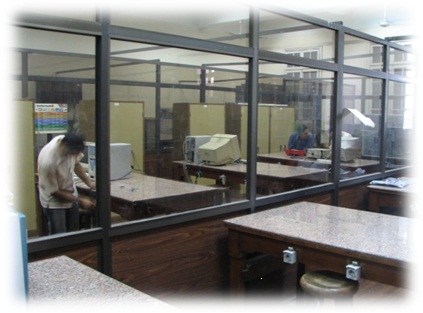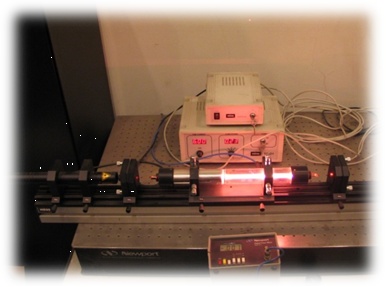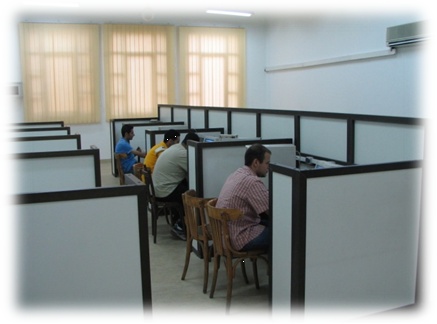Tool for Extensive Management and Performance Optimization (TEMPO) for 3G



The output of the project is a software tool “TEMPO” integrating the set of 3G radio network optimization and control applications available at Vodafone Egypt. Moreover, extra features are planned to be integrated into TEMPO which are aimed to fix problems, improve performance, and intelligently correlate different available inputs that will ultimately optimize the 3G network. Consequently, this will help improving customer experience which will in turn stimulate more usage and hence increase revenues.
TEMPO actions will include:
1. Resolve Cross feeder cases. TEMPO will report this problem to the radio engineers to take the correct action.
2. Optimize Neighbor definitions. TEMPO will continuously add/delete from the neighbor’s list of different cells in an efficient manner.
3. Identify sleeping cells. TEMPO will identify sleeping cells and change their status to active cells whenever applicable.
4. Detect and reduce ping pong handover. TEMPO will detect the ping pong situations and suggest possible root causes of the problem.
5. Resolve pilot pollution. TEMPO will identify interfering codes and suggest solutions.
6. Ensure parameter consistency. TEMPO will check the consistency of the parameters throughout the network.
7. Identify the top worst N cells within a region for a specific KPI. TEMPO will be flexible enough to accept new KPIs that can be defined by the radio engineers. It is worth mentioning that the worst KPI can differ based on the area clutter, number of sites, and density of traffic. Some important KPIs are network accessibility, network retainability and network integrity. TEMPO will give special attention to these KPIs among others.

The details of the milestones are listed below:
A. Research and Documentation Milestone
Under the research and documentation milestone, there are some tasks that need to be accomplished. These tasks
are as follows:
• Understanding the 3G network and its relevant protocols.
• Understanding and reporting the input and output of the existing radio network monitoring tools as well as the network operating system.
• Understanding the different parameters captured by the current tools and identifying the KPIs. This includes reporting different methods of sensitivity analysis to the KPIs.
• Understanding different graph theories for implementing the relations among the different KPIs and between the KPIs and the network parameters.
• Investigating the data mining algorithms especially the ones related to stream data mining. That should make it easy in later phases to decide on the suitable data mining approaches for the collected data as well as on a suitable analysis and implementation approach.
B. Algorithms development milestone
During this milestone, we will utilize our understanding of the network in the research stage to develop the selected KPIs relationships analysis and to design the required algorithms to implement TEMPO. Specifically, the following tasks will be executed:
• Ranking the selected KPIs according to their importance in representing the network status.
• Evaluating the selected KPIs relation with the most important radio network parameters, and correlating them with the set of radio network problems.
• Recommending a set of possible solutions to address radio network problems.
• Researching and choosing the most suitable data mining technique to handle the streaming information from the network.
• Researching and choosing the best SOS architecture.
C. Software design Milestone
The details of designing the software elements will be the main activity in this milestone. The following blocks will be designed:
• The gateway: since it is the starting point of other functionalities in the project, the first block to design is the gateway. It will be carefully designed to allow the integration of new parameters.
• Data mining: in which a suitable analysis, data reduction techniques and the required databases will be implemented.
• KPI analysis and inter-relation block design: the algorithms developed in the previous milestone will be mapped to a software design
• Proactive optimization block: the inputs from the network, the data mining block and the KPI analysis block will be processed by the proactive optimization block. The design of this block and the interfaces with the other blocks will be developed
• System integration design: different interfaces between the blocks will be designed for harmonious interaction.
D. Software Implementation Milestone
Since TEMPO is a computationally intensive tool, the implementation part has to follow one of the standard software design models. It is believed that Spiral model will be suitable for this project as TEMPO is a large project that deals with huge data as input and requires complicated analysis procedure. At the same time, TEMPO depends on some of its phases on the output of the research team which poses some risk on the development process. Therefore, we tend to use the straightforward methodologies as well as spiral model to mitigate the development risk. In fact, spiral model treats even the testing phase as risk that needs to be addressed. Also, the spiral model estimates the budget and schedule in a more realistic way as work progresses, because important issues are discovered earlier. This may enable early changes as well. Moreover, the model allows software engineers to get their hands in and start working on a project earlier.
We believe that there are possibly overlapping tasks that can be accomplished such as:
• Implementing the gateway
• Implementing the data mining block
• Implementing the KPI analysis and interrelation tool
• Implementing the proactive optimization block
• Implementing the inter-block interfaces
• Implementing the interfaces with the tools available at Vodafone Egypt
• Integrating the different blocks to create TEMPO,
• Documenting the tasks
Following the Spiral model, we might need to revisit some of the previous tasks iteratively until they reach a
reasonable performance and stability.

E. Software and system Testing Milestone
Testing is not an easy task especially in large project like the one in hand. The team has to do the following
types of testing before delivering the final version of TEMPO:
• White box testing
o It deals with the internal logic and structure of the code. The tests incorporate coverage of the code written, branches, paths, statements and internal logic of the code etc.
• Black box testing
o Black Box Testing is not a type of testing; instead it is a testing strategy, which does not need any knowledge of internal design or code etc. Black box testing is based/focused on the testing for requirements and functionality of the work product/software application. It can be considered a "Functional/Behavioral Testing" or "Closed Box Testing".
• Usability Testing:
o Usability testing is a way to measure how intended users, network optimization engineers in our case, can interact with and use the system keeping its purpose in mind. It is a standard statement that "Usability testing measures the usability of the system".
• Stress testing
o It implies testing the project with large amount of data and analysis. During this test, we also test the threads and their efficiency in doing the required tasks.
• System testing
o It is the final task where the prototype of TEMPO, once available, will be partially used by Vodafone Egypt to get feedback from real traffic scenarios. The term testing in this context refers to a real deployment of the software on one of Vodafone Egypt sites for the purpose of checking on the tool’s functionality, efficiency, and performance.
Vodafone Egypt
PCs and Laptops




